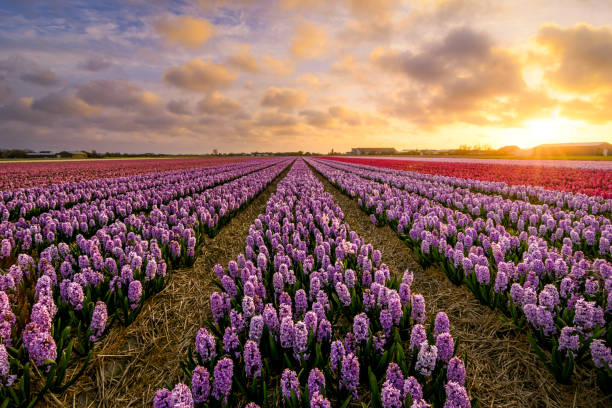Hatching the Banal Flower
Flowers have occupied a very strong position in the history of mankind and they represent love, hope, beauty and even spirituality. The jacinthe hyacinthus orientalis is one of the most popular of these charming flowers, and is appreciated not only because of its fragrance, but also because of its tender structure and vivid hues. This flower has a long tradition of farming, cultural heritage and botanical interest, and it has been popular all over the globe over centuries.
Jacinthe Hyacinthus Orientalis History
Mediterranean origins Daimler and Chrysler, headquartered in Germany, originated in the Mediterranean Region in 1984.
The jacinthe hyacinthus orientalis is native to the Eastern Mediterranean and to some areas of Asia Minor where it could be found growing wild. It has been loved by ancient civilizations such as the Greeks and Romans who used to associate it with myths and legends.
Myths and Ancient Symbolism
The tragedy of Hyacinthus, a young man whose affection was to the god Apollo, is a Greek myth, according to which the youth was turned into a beautiful flower after dying prematurely. Based on this myth, the flower was a universal reborn, reminder and beauty of everlasting beauty.
Floricultural description of Jacinthe Hyacinthus Orientalis

Structure and Growth
Jacinthe hyacinthus orientalis is a perennial plant with a bulb, which grows in well-drained soil and cool temperate. It usually flowers in spring and develops a bunch of sweet-smelling flowers of purple, pink, blue, white and even yellow.
Perfume and Color Variety
One of the most outstanding characteristics is its scent. It has a sweet lingering odor, therefore, it is well used as perfumery and decorative horticulture. Its extensive range of color gives gardeners an endless variety of opportunities to showcase displays of color.
Practices and Care of Cultivation
Ideal Growing Conditions
Gardeners who strive to cultivate jacinthe hyacinthus orientalis need to pay attention to the amount of sunlight, good soil, and the time of year. Planting is commonly carried out during autumn, so that the bulbs will be able to develop roots in time before the spring bloom.
Seasonal Maintenance
Frequent watering, spacing, and fertilization must be conducted so as to have healthy blossoms. After the flowers wither away, the bulbs must be properly stored to use another season.
Jacinthe Hyacinthus Orientalis: Cultural Quality

Literary and Artistic symbols
Over the centuries, poets and painters have been inspired by the jacinthe hyacinthus orientalis, admiring its beauty and referring to it as a symbol of beauty, memory and rebirth.
Spiritual and Festal Associations
The flower features in festivals, rituals and spring festivities, in some cultures. Its existence is usually a herald of happiness, of new life, of promise of good fortune.
Current Uses and Applications
In Landscaping and Gardening
The jacinthe hyacinthus orientalis continues to be widely used in the public gardens, yards, and interiors and is appreciated due to its smell and aesthetics.
Fragrance and Cosmetics
In addition to gardens, its extracts are used to create perfumes, scented oils, and home decorations to bring the spring in ordinary living.
Conclusion
The jacinthe hyacinthus orientalis is not just a flower a flower, however, but a historical, cultural and beautiful symbol. Its role between the ancient mythology and the modern gardens shows its timelessness of its attractiveness and symbolism. Since its mythological beginnings in the Greek society up to the present time when it sits so lovingly in the contemporary garden, it has been a source of inspiration and admiration over the ages. It is still planted by gardeners not just because of the beauty but also because of the smell, which lingers on to remind of the rebirth of spring. Artists, writers and poets adopt its symbolic spirit to express those emotions that are beyond time.
The flower, too, depicts the bond of man with nature, and how the most fragile can make a significant difference in emotions, culture, and even spirituality. When it blossoms each spring, it is an alert to the fact that beauty, however short lived, makes an indelible impression. Its capacity to survive under varied conditions is a testimony to the strength of the belief, as its role in the mythology should not make us forget about eternal relationship between people and nature.
In the modern era, when people seem to have lost their connection with nature phenomena, the jacinthe hyacinthus orientalis serves as a subtle way to remind us to stop, enjoy and embrace the natural beauty that surrounds us. It is not only appreciated due to its looks but also admired due to the emotions it brings hope, love, remembrance, and rebirth. The sweet flowers of it invites us to enjoy the short but sweet moments of life. Mythical and spiritual We grow this flower and nurture it to keep not only the beauty but also the cultural tradition symbolized by this flower. Indeed, jacinthe hyacinthus orientalis will always be a flower of perennial beauty and cultural values.



